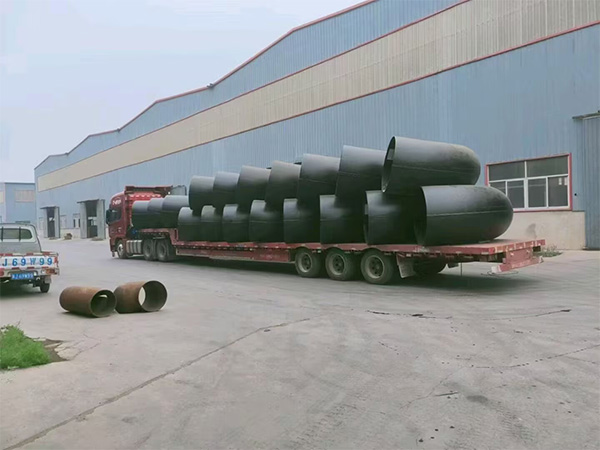Elbows, as key components for changing the flow direction of media, are often used in the design and construction of pipeline systems. Its material, size, manufacturing process and inspection requirements all need to comply with strict standards and specifications to ensure the safety, durability and interchangeability of the pipeline. When making a selection, the appropriate standard and model should be chosen based on factors such as working pressure and temperature. The following are the main standards and contents:

American/international standards (ANSI/ASME, ASTM, MSS, etc.)
ASME B16.9: Butt Weld elbow dimensions standard (long/short radius, 45/90°/180°).
ASME B16.11: forged (socket-weld and Threaded) pipe fittings, including small caliber elbows.
ASTM A234 (carbon/alloy steel butt-welded elbow) and ASTM A403 (stainless steel butt-welded elbow), clearly define the material, chemical composition and mechanical properties.
MSS SP-75: High-strength carbon steel or alloy steel elbow.
MSS SP-43/79/83/95: Corresponding respectively to different types of pipe fittings such as stainless steel, socket/ thread, high pressure and low pressure.
ANSI/B16.28: Standard for Short Radius butt-welded elbows, supplemented by B16.9.
Japanese standard (JIS standard)
JIS B2311 / B2312: Steel butt-welded seamless pipe fittings, including elbows.
JIS G3442-3448 series: Relevant standards for stainless steel and galvanized steel pipes, applicable to elbows as well.
Chinese standards (GB/GB - T/HG/SH, etc.)
GB/T 12459-2005 (steel butt-weld seamless pipe fittings) : applicable to 90°, 45°, 180° elbows, nominal diameter DN15-1400.
GB/T 13401-2005 (steel plate butt-welded pipe fittings) : steel plate welded elbows and pipe fittings, including dimensions, tolerances, etc.
GB/T 14383 - forged steel socket welded pipe fittings: for socket welded elbows, nominal diameter DN15-80.
GB/T 17185-1995 (steel flanges) : covers flange-connected pipe fittings as well as elbow parts.
Industry standards (petrochemical, boilers, fluid systems)
Sh3409-1996 / SH3410-1996: Model Standard for Forged Steel Socket Welded Pipe Fittings in the Petrochemical Industry.
Sh3065-1994: Applicable to the technical requirements for sharp bends in tube furnace equipment.
Elbows can also be classified according to different types, materials, etc. The following are their different classifications and corresponding standards.
Classify by radius and Angle
Radius can be divided into two types: long radius and short radius.
Long radius (LR) : R = 1.5 × DN (There are also 3D, 5D, 10D, etc. for compensating thermal expansion/vibration reduction).
Short radius (SR) : R = 1 × DN, suitable for limited Spaces.
Classified by Angle: Common angles include 45°, 90°, and 180°. There are also special angles such as 60° and 120°.
Classify by material and connection form
Common materials include carbon steel, stainless steel, alloy steel, high-pressure steel, etc.
Carbon steel: The elbow made of carbon steel mainly has the following standards: ASTM A234 WPB/WPC; GBQ235A, 20#, 16Mn, etc.
Stainless steel: The main standards for elbows made of stainless steel are as follows: ASTM A403, WP304/316, A270. GB/T, etc.
The main connection methods are as follows:
Butt welding: The end of the pipe is machined into an inclined or curved surface, which is tightly connected to the end face of the elbow. Then, a circular welding is carried out along the Weld seam, and the weld seam is integrated with the base metal. Standards such as ASME B16.9 / GB/T 12459.
Socket-weld: Insert the end of the pipe into the Socket of the elbow, leave an appropriate gap, and then perform a circular Weld on the shoulder between the socket and the end of the pipe. The standard is ASME B16.11 / GB/T 14383.
Threaded: The pipe end and the inner hole of the elbow are processed into matching internal and external threads. The elbow is tightened onto the pipe by screwing. It is mostly suitable for small-diameter and low-pressure applications.
Flange connection (Flanged) : A flange surface is set at the pipe end and the elbow respectively. The flange plates are clamped together and fastened with bolts. A gasket is added in the middle for sealing, which is convenient for disassembly, assembly and maintenance.
